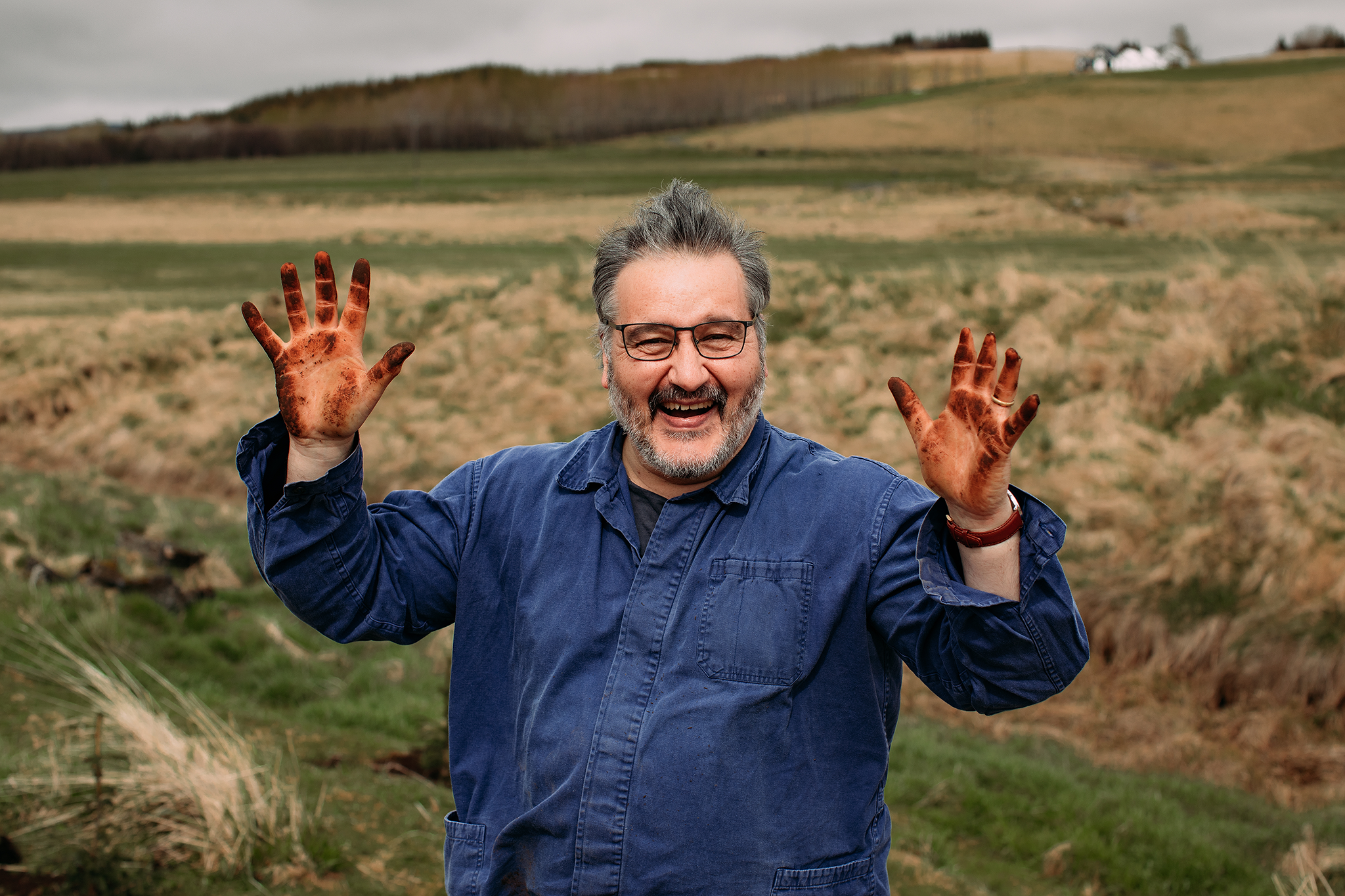Mjór er mikils vísir*

We’re newly returned from an inspiring week in Iceland, where we visited the nursery at Tumastaðir cultivating the seedlings that the pilot festivals have invested in, and with our colleagues and partners from Skogræktin, the Icelandic Forest Service, we planted the very first saplings in the ground.
These are the first trees of the first ten hectares of forest. We’re planting downy birch, lodgepole pine from Alaska, black cottonwood, Siberian larch and a hybrid Sitka and Englemann spruce tree blended for maximum carbon capture by our mentor and friend, Throstur Eysteinsson, the Skogræktin director. The land sits under the awesome beauty of the EyjaIallajökull volcano in the Rangárþing eystra region. The soil here is peaty, enriched with volcanic dust from the eruption in 2010, when “E16” (our Icelandic hosts savour the lavish pronunciation of the full name, whose polysyllables sound like an entire line of poetry, but even they use the shorthand letter count as an abbreviation) clouded the skies and brought all European flights out of the air for 8 days. When you sink a spade into the turf it bites down a foot deep quite easily. Trausti and Hreinn show us how best to break up and sift the soil between fingers and thumb, to place the saplings and to bed them in. They work at a breath-taking speed. It’ll take this team a day to plant 2,500 trees in a hectare of land. After three years of asking and learning and planning and zooming and emailing, of policy and testing and failing, and failing better, there’s a real joy in literally rolling up our sleeves and getting down into the earth. Digging in. Getting our hands dirty. We’re “grounded” now.
There’s a quiet thrill to be working with trees that thrive right around the 66th parallel East and West, a super-northerly global North. The greenhouses are about the size of a football pitch. We marvel at the banks and banks of seedlings, each one of them the result of a festivalgoer in the Netherlands, in Belgium, in Kosovo and in Italy who invested in the pilot year of this project to capture carbon and help their beloved festivals work towards net zero. Hrafn Óskarsson, the site manager, describes the cycle of each species and how the mixed forest might evolve. He’s projecting not just in decades but in generations and centuries. For a society that’s seen, in less than a lifetime, the effects of global warming melt their glaciers, knock back permafrost, and change the contours and fertility of their land, planning for the future is purposeful, imaginative and quietly hopeful.
This land was deforested over a thousand years ago by the first Scandinavian settlers for grazing and for charcoal. Time warps here, back to an ancient land of Old Norse, of Eddas and Sagas and geysers and flumes of steam, and forth to the harnessing of geothermal power and digital connection. The abiding theme is resilience and adaptability. Now, as Arctic thaw accelerates, a 1.5° rise in temperature over the last 25 years means the nature of the land and the climate is changing and so is the potential for vegetation. In the past 8 years oak has proved viable here and will be added to the forest. Thröstur first joked last summer that one of the reasons afforestation works so well here, that more seedlings survive and prosper, is that the island of Iceland has no squirrels. None. Never came. Isolation from pests is a rich plus for two specific trees in a warming world, where now Iceland is a kind of arboretum sanctuary. The nursery at Tumastaðir is successfully cultivating both Elm and Ash, protected on this remote island from the destructive power of the elm bark beetles and ash dieback that has devastated these species in Europe, Asia and North America.
All around the nursery we see what 20 years of larch growth looks like – about 30 feet – shorter than the spruce, but taller than 45-year old birch. And everywhere here, birdsong. Gloriously vocal. And the sheer strangeness of the loud bleating sound made by the tailfeathers of the common snipe in flight. Here be gyrfalcons, snow-geese and golden plovers. Maybe it’s the sparsity of human population (there are 390,000 people in Iceland, a country two and a half times as big as the Netherlands, population 18 million) that makes the birds seem louder than back in mainland Europe. Maybe they are just happier, or keener to mate. Anywhichway, we’re planting trees here to sequester carbon to mitigate the effects of music lovers gathering together to celebrate. And, beautifully, birds are singing in these woods.
* The Icelandic phrase Mjór er mikils vísir translates as “from something slim, can grow something big in the future”. I love it that idiomatic English uses a more overt, and perfectly apt tree metaphor “from tiny acorns, mighty oaks will grow”.